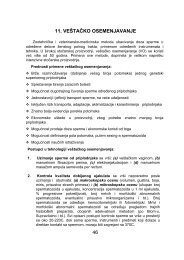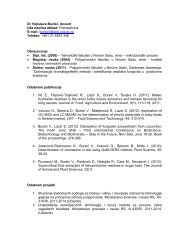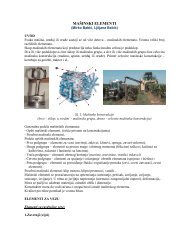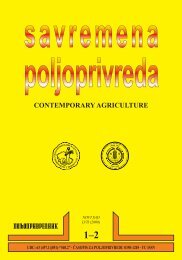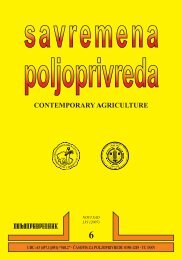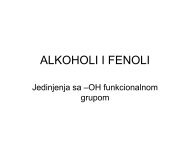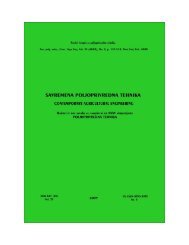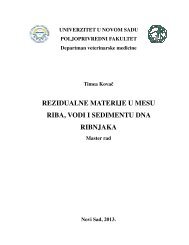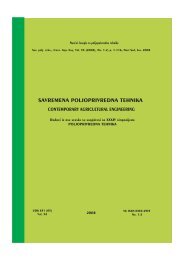LETOPIS naučnih radova - Poljoprivredni fakultet - Univerzitet u ...
LETOPIS naučnih radova - Poljoprivredni fakultet - Univerzitet u ...
LETOPIS naučnih radova - Poljoprivredni fakultet - Univerzitet u ...
You also want an ePaper? Increase the reach of your titles
YUMPU automatically turns print PDFs into web optimized ePapers that Google loves.
4. Govedarica M, Jarak M (2003): Praktikum iz mikrobiologije. <strong>Poljoprivredni</strong> <strong>fakultet</strong>,<br />
Novi Sad.<br />
5. Hashem, MA (2001): Problems and prospects of cyanobacterial biofertilizer for rice<br />
cultivation. Aust J Plant Physiol 28: 881-888.<br />
6. Jarak M., Milošević N., Milić V., Mrkovački N., Marinković J. (2005):<br />
Mikrobiološka aktivnost- pokazatelj plodnosti i degradacije zemljišta.Ekonomika<br />
poljoprivrede, No 4/2005, pp.483-495<br />
7. Rippka R, Deruelles J, Waterbury JB, Herdman M, Stanier Y (1979): Generic<br />
assignments, strain histories and properties of pure cultures of cyanobacteria. Journal<br />
of General Microbiology 111: 1-61.<br />
8. Trolldenier G. (1996) - Plate Count Technique. In Methods in Soil Biology. Ed.Franz<br />
Schinner, Ellen Kandeler, Richard Ohlinger, Rosa Margesin. Springer-Verlag Berlin<br />
Heildeberg., pp. 20-26.<br />
9. Venkataraman GS (1972): Algal biofertlizers and rice cultivation. Today<br />
&Tomorow's Prints. Indian Agricultural Research Institute, New Delhi, 1-14.<br />
9. Mallavarapu M (2001): Healty levels of soil algae lift plant growth. CSIRO Land and Water,<br />
Farming Ahead 120: p21.<br />
THE OCCURENCE OF NITROGEN-FIXING<br />
CYANOBACTERIA, ALGAE AND BACTERIA IN DIFFERENT<br />
TYPES OF SOIL<br />
by<br />
Mirjana Jarak, Oliver Fojkar, Timea Hajnal-Jafari, Simonida Đurić, Dragana<br />
Stamenov, Josip Čolo<br />
SUMMARY<br />
The objectives of this study were to determine the frequency of nitrogen-fixing<br />
cyanobacteria, algea and total number of bacteria in different types of soil of Vojvodina<br />
province. The presence of these groups of microorganisms in the vertical profile of each<br />
soil type was also determined. Microorganisms were studied in five soil types:<br />
chernozem, fluvisol, arenosol, solonetz and humogley. The highest number of nitrogenfixing<br />
cyanobacteria and bacteria was obtained in solonetz while the highest number of<br />
algae was determined in fluvisol. The number of investigated groups of microorganisms<br />
in the analyzed soils were found to be depended on soil type and soil profile depth. The<br />
numbers of the microorganisms under study typically decreased with soil depth. The<br />
obtained results show us that the strains of nitrogen-fixing cyanobacteria isolated from<br />
local soil may be used through biotechnological application in the development of<br />
microbiological inocula which are effective in temperate climatic conditions.<br />
Key words: cyanobacteria, algea, bacteria, soil, number.<br />
Primljeno: 30.09.2012.<br />
Prihvaćeno: 10.10.2012.<br />
Istraživanja iz ovog rada deo su projekta TR 31027.<br />
100




